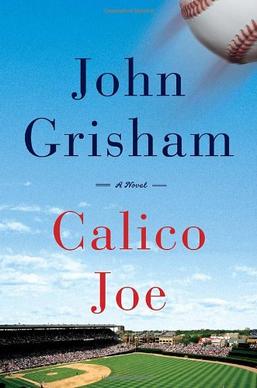 During its heyday, the miniseries usually focused on sweeping, multigenerational sagas, but mystery novels were occasionally included. I remember a late seventies adaptation of Dashiell Hammett's The Dane Curse starring James Colburn. And there were the two BBC productions I revisited this past winter, Tinker, Tailor, Soldier, Spy and Smiley's People, which were both based on novels by John le Carré. The inspiration for my video trip down memory lane was the much more recent film version of Tinker, Tailor, which starred Gary Oldman. I enjoyed the movie, but it left me nostalgic for the 1979 miniseries, in which Alec Guinness played George Smiley, "retired" spy.
During its heyday, the miniseries usually focused on sweeping, multigenerational sagas, but mystery novels were occasionally included. I remember a late seventies adaptation of Dashiell Hammett's The Dane Curse starring James Colburn. And there were the two BBC productions I revisited this past winter, Tinker, Tailor, Soldier, Spy and Smiley's People, which were both based on novels by John le Carré. The inspiration for my video trip down memory lane was the much more recent film version of Tinker, Tailor, which starred Gary Oldman. I enjoyed the movie, but it left me nostalgic for the 1979 miniseries, in which Alec Guinness played George Smiley, "retired" spy.If that reference to Smiley's profession (or your own knowledge of le Carré's works) has you thinking that these books are espionage stories and not mysteries, you're half right. They're espionage stories and mysteries. In fact, Tinker, Tailor is a whodunit, as were le Carré's two earlier Smiley books, Call for the Dead and A Murder of Quality. I still remember the suspense that slowly built during the original broadcast of Tinker, Tailor (which didn't occur in the U.S. until 1980) over the true identity of Gerald, the Russian mole inside British Intelligence. Reviewing the miniseries courtesy of Netflix, I felt that old suspense again. (Netflix did its best to encourage this by only entrusting me with one of the series' three discs at a time.)
 Smiley's People is somewhat less satisfying as a story but just as well adapted. (Both series were scripted by le Carré himself.) There is a murder to be solved, but Smiley is more interested in why it happened than in who did it. Though made three years after Tinker, Tailor, Smiley's People reunites many members of the original cast. In fact, the casts of both miniseries are uniformly excellent. They include future stars Alan Rickman, doing a bit as a desk clerk, and Patrick Stewart, in the nonspeaking (!) role of Russian master spy Karla. Two of the strengths of Smiley's People are some great location shooting and an increased amount of screen time for Alec Guinness, who functions like a loner P.I., warned off the case by the authorities and hunted by the bad guys.
Smiley's People is somewhat less satisfying as a story but just as well adapted. (Both series were scripted by le Carré himself.) There is a murder to be solved, but Smiley is more interested in why it happened than in who did it. Though made three years after Tinker, Tailor, Smiley's People reunites many members of the original cast. In fact, the casts of both miniseries are uniformly excellent. They include future stars Alan Rickman, doing a bit as a desk clerk, and Patrick Stewart, in the nonspeaking (!) role of Russian master spy Karla. Two of the strengths of Smiley's People are some great location shooting and an increased amount of screen time for Alec Guinness, who functions like a loner P.I., warned off the case by the authorities and hunted by the bad guys.It would be hard to overpraise Alec Guinness's two performances as George Smiley. Guinness was an actor who could play broadly if the role called for it, but his real forte was underplaying. His talent for quiet was put to good use here, as George Smiley is one of the great listeners of popular literature. Both miniseries feature powerful scenes in which some other, more flamboyant character wanders far from the point of the conversation while Smiley sits quietly, waiting to draw him or her back. Depending on the situation, he might cajole or flatter or wheedle or simply will the wanderer to focus. I've written that sort of interaction many times, as has any writer of detective fiction, and it's a pleasure to see it done this well. And Guinness/Smiley's reactions to the constant references to his wife's infidelities--tiny winces or a slight narrowing of his eyes or just blank resignation--are equally wonderful.
I'll mention one last point of interest, at least for the writer of historical fiction. There are only two types of films and television shows: those done as period pieces and those that become period pieces over time. Smiley's miniseries are in the second group. I'd forgotten that the three-year gap between the two series marked a sea change in men's fashions. In Tinker, Tailor, wide, loud ties and wider lapels predominate. By Smiley's People, styles (or should I say widths?) had returned to a more classic look.
The late seventies might have been a bad time for clothes, but it was a really good time for long-form dramatic television. If you haven't seen these two examples recently, check them out.







